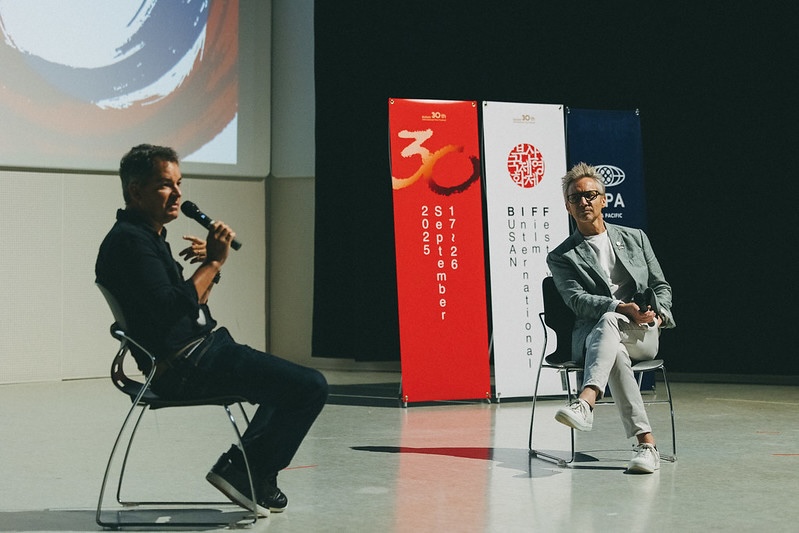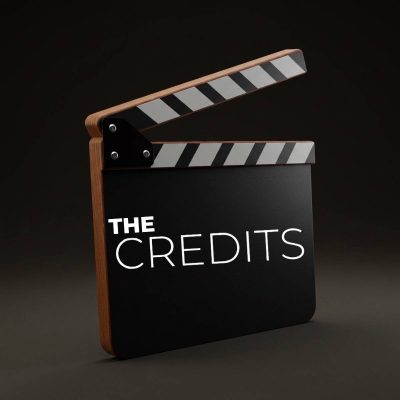The Heart of the Story: How Carlos Saldanha Went from Film Student to Animation Legend
Carlos Saldanha came to Busan with one chief piece of advice for the 24 emerging filmmakers gathered from across Asia for this year’s edition of the CHANEL X BIFF Asian Film Academy.
“Every minute counts on the journey towards your objective,” was the message, and the Brazilian filmmaker has crafted a remarkable career out of following that to the letter.
The driving force behind such global hits as Ice Age: The Meltdown (2006), Rio (2011), and the Oscar-nominated Ferdinand (2017), picked up the microphone at the annual MPA-BAFA Film Workshop “Bridge to Hollywood,” collaborating with the Motion Picture Association (MPA) initiative on the sidelines of the Busan International Film Festival. Saldanha took this year’s academy members on a journey through his career.
Saldanha had arrived as a wide-eyed student in New York City to find “rooms full of computers” and the life-altering discovery that those computers could be “used to make art.” From there, he gained attention with his graduation short, “Time for Love,” and soon found himself part of the game-changing Blue Sky Studios, based in New York, which was on the vanguard of animation that explored the many wonders made available through CGI technology.
The hits came, and Saldanha started to expand his own horizons, moving from animation into live action, from movies into TV series with projects for the likes of Netflix (Invisible City in 2021) and Hulu (How to be a Carioca in 2023) and, next, Disney’s 100 Days, a biopic about Brazilian explorer Amyr Klink, set for a release sometime in 2026.
“What inspires me? Good stories with good emotional heart moments,” said Saldanha. “Every time I think about a story, the first thing that I do is I think about the heart of the story. And then from that point on, I think about the fun, the comedy, and all the other things that come together with that. But if the story doesn’t have that pulsing little beat there, I’m not interested.”
Saldanha also shared what he’s learned about charting a course through the industry: “Besides just being diligent and trying to learn as much as you can, look for opportunities, keep your antennas always on, because I think that if you have a goal, you have a focus, and things start to come together.”
Later in the afternoon, Saldanha offered pitching advice before opening the floor for a Q&A.

How did you approach pitching earlier in your career?
When I go to pitch, I start by presenting why I want to do this project and what inspired me about it. Your passion for your project is very important, and it’s contagious. You have to pass it on because they have to be as passionate about the project as you are. It’s very important to be truthful and be coming from the heart. If you are pitching to me, I don’t want to know how you’re going to make it, what kind of technology you’re going to use. I want to know how you can make me want to make your project. That’s how I start, and I also try to be very firm, yet humble, because once you pitch a project, it will evolve. The more money they put in, the more control they want to have, so you have to be prepared for all that, and you have to be mature enough or humble enough to acknowledge that and to leave the door open for collaboration, without losing the essence of what you want to do.
Were the changes you had to make on Rio an example of that?
I had to give up having a penguin [as the lead character], but I ended up making a better story because I added a bird, and that ended up being more interesting for the story. I created a love story and all kinds of stuff that became much more interesting than a penguin story. So again, be open. Come in with your heart in the right place and pitch your heart out. That’s the way to do it.
Did you apply animation principles to live-action filmmaking?
I tend to always talk about this because it’s all about storytelling, right? No matter what medium you use, it’s all about storytelling. So, when I approach animation, I approach it in the same way I approach live-action. I don’t talk about the technology or the cameras that I want to use, or the crew that I need to get. This is something that I will think about later in the game. With live action, I had to learn a lot because I didn’t have experience on set. But I knew a lot about animation, and we use very similar principles. We used cameras, we know how the camera moves, and we know how to compose a scene. So, all of that you apply to live action. And one thing where animation is a benefit is that I draw storyboards. I can convey some of the ideas through drawings.
What about when shooting actually starts?
I would say sometimes I’m more precise and sometimes more interactive with the DP and the crew, because I’m able to express visually what I want. I think that’s the important thing about either project. In animation, you tell the story through movement to bring things to life. And live action is the same. Get good animators, get a good crew, and you’re all set.
How do you develop your own projects? Could you shed some light on that?
With the success of the stories I decided to tell, I think people were very open to me trying something different. I would say I started small and kept things contained, pacing myself to the learning curve. With that in mind, I completed projects to build my portfolio and to build trust. I think the essential thing is building trust. If you’ve never done anything, you might want to start by doing something that’s not exactly what you want to do first, but then gain experience, build a name for yourself, and see what that turns out to be. You know, it’s the chicken and the egg. If you don’t have a movie, they’re not going to give you a movie, but to get a movie, you need to have done a movie. You get into that kind of vicious cycle that you can never get out of. So it has a lot to do with your confidence and ability to do it. I didn’t direct an animated movie before I became an animator; I became an animator, and I became a modeler. I knew the process, I made connections, I talked to people, I built trust. And then I directed a project.
Has this process evolved over the years? Are more people taking matters into their own hands?
I find that many people can successfully gather a team, independently secure funding, and undertake this as their first project. Sometimes, that first project becomes a great window of opportunity. It might not be perfect. It might not be that great. But if you put your heart and soul into it, people will look at it in a different way.
What kind of environment do you try to set up when you start, and how do you maintain that?
Especially in animation, I see myself more like a cheerleader than a leader. You can never do these projects by yourself. Time for Love I did by myself, but that was at school. I had some help from my classmates. But truly, when you get into the real business, when you take on a big project with big responsibilities, you never do it alone. I think your job is to make sure that you’re always surrounded by people who want to make the best project. It’s all about the project. You have to develop the social skills to embrace talent and listen. I think listening is much more important than talking. And even as a director, even though I have to give directions, that’s the role; most of the time, I’m quiet, I’m listening, I’m seeing what people are feeling, and I’m trying to hear what they have to say. And then I’ll make my decision. I probably already have something in my head that I want to go for, but before that I try to hear and figure out the best way to achieve that, and give people responsibility as well, allowing them to be truly teammates.
How do you approach handling the distribution side of the business?
It’s a very tricky world out there when it comes to distribution, especially if you’re doing it independently. From the get-go, I tried to have potential partners as distributors. For example, 100 Days is a partnership with Disney Latin America. Of course, we sold the project to them, and then we are doing a partnership for distribution there. So, if you don’t have that access, or if it’s challenging for you, even though you have a movie in your hands and funding to make it, you might have to consider it something you do later. Focus on making the best movie you can make. Just make the best movie that you can make with what you have, and trust in the notion that will be your calling card. That will be your way in. If people like it, you might find distribution. And it might not necessarily be a big studio, but it could be an independent distributor that you should look for, which could help you at least get your movie shown around. Festivals are good, too.
Questions and answers have been edited for clarity and brevity
Featured image: CULVER CITY, CALIFORNIA – JULY 21: irector Carlos Saldanha at the Influencer Event and Screening for Sony Pictures’ “Harold And The Purple Crayon” at Culver Theater on July 21, 2024 in Culver City, California. (Photo by Eric Charbonneau/Getty Images for Sony Pictures)



